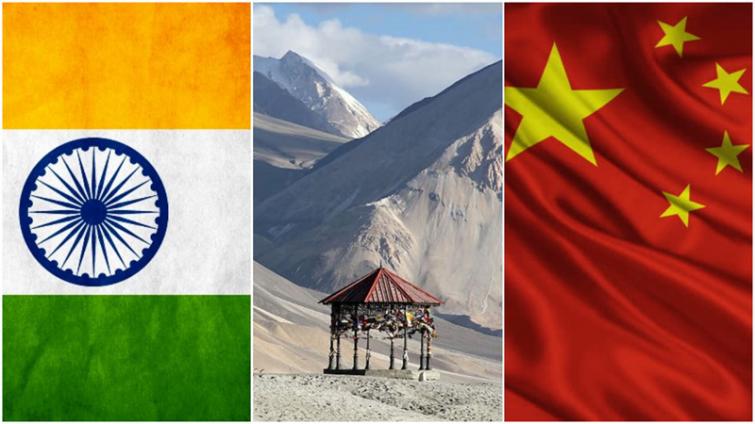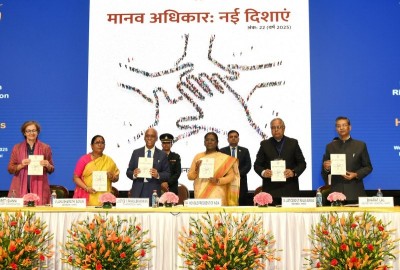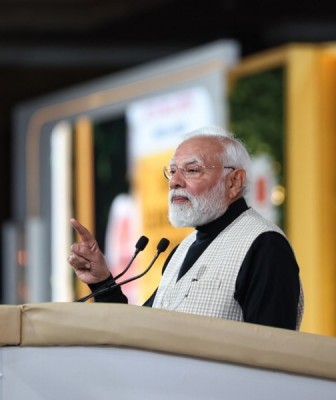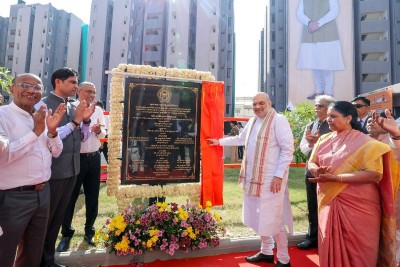 India-China
India-China
Prolongation of the India-China standoff at the LAC may lead to sharper Indian focus on the Tibet issue
Developments around the Pangong lake over the past week have spawned the distinct impression that the trust deficit between India and China has only increased despite the ongoing talks between the two countries aimed at finding an acceptable solution to the several flashpoints that have been ignited by China along the Line of Actual Control (LAC) that separates the two countries.
Although the picture of exactly what happened between 29 August and 1 September near Pangong lake is still hazy, with officially recounted details yet to emerge, that the situation continues to remain serious and tense was reflected in the statements issued in recent days by both India and China.
While both countries have said that they retained faith in negotiations based on the earlier agreements to maintain “peace and tranquility” in the border regions, the differing perceptions of the two sides on where the LAC lay and ran through, the frayed tempers on both sides, as well as the aggressive militarization of the area after the bloody 15 June Galwan clashes, all meant that a negotiated settlement would not be easy to rush through.
Providing a glimpse of its version of how events had unfolded in Pangong, the Indian Army in a statement issued on 30 August said that “On the Night of 29/30 August 2020, PLA (People’s Liberation Army) troops violated the previous consensus arrived at during military and diplomatic engagements during the ongoing standoff in Eastern Ladakh and carried out provocative military movements to change the status quo. Indian troops pre-empted this PLA activity on the Southern Bank of Pangong Tso, undertook measures to strengthen our positions and thwart Chinese intentions to unilaterally change facts on ground”. India’s Ministry of External Affairs (MEA) added on 1 September, “Yesterday on 31 August, even as the ground commanders of the two sides were in discussions to de-escalate the situation, the Chinese troops again engaged in provocative action. Due to the timely defensive action, the Indian side was able to prevent these attempts to unilaterally alter the status quo”.
Other unofficial reports have elaborated that the PLA, under the cover of night, had tried to execute another land grab targeting some heights on the southern bank of Pangong Tso that would have given them operational advantages. Security analyst Nitin Gokhale averred that the Chinese troops were targeting the Chushul/Spanggur gap, south of Pangong Tso.
While reports in large sections of the Indian media suggested that no physical clashes had taken place, British daily The Telegraph claimed that Indian troops not only repulsed an attempt by the PLA to occupy more Indian territory, but they also captured Chinese camps in a retaliatory move.
The report in The Telegraph added, “on Saturday evening, around 500 Chinese troops had tried to cross into Spanggur, a narrow valley near the village of Chushul and three hours of hand-to-hand combat ensued”.
It is significant that unlike the northern bank of Pangong Tso where, as elaborated in the EFSAS Commentary of 22-05-2020, India and China have serious differences over the alignment of the LAC and have clashed frequently, there had been no dispute in the past over the southern bank over which India exercised strong sovereign control.
The Chinese statement of 30 August denying that the PLA had crossed the LAC and claiming that the Chinese army “always strictly abides by the LAC. They never cross the line” has been interpreted by observers as yet another attempt by China to shift the line itself as per its convenience.
The Chinese thinking seems to be that if the line can be shifted at will, the PLA could never be accused of crossing the LAC.
India, meanwhile, has taken a leaf out of the Chinese book, and as per reports has in the days following the Chinese move taken control of some strategic heights not only on the southern bank of the Pangong Tso, but also its northern bank, thereby bolstering its position. This took China by surprise and appears to have unsettled it.
China anticipated much less pushback against its attempts since April to alter the status of the LAC at multiple points through surreptitious incursions into the India side.
Spirited, tactically sound responses by India’s troops have left China stuck in a quicksand of its own making that it can neither extricate itself easily from nor remain stuck in for too long.
Public opinion in China has been woven around a strong and invincible image of President Xi Jinping, which would be tarnished greatly were China to pack up and leave the Himalayan heights at this stage.
Digging in for the long haul with winter fast approaching would present its own set of serious physical and logistical challenges at altitudes well over 4000 meters.
As for India, it had been brought out in October 2018 in the EFSAS Study Paper titled 'The Doklam Standoff:
A template for countering Chinese belligerence and expansionism' that India had learnt from the Doklam face-off in 2017 that it was firm resolve on the ground backed by potent and demonstrated military capabilities that would force China to back down and negotiate.
Despite the repeated incidents near Pangong Tso over the last few days and the visible erosion of trust, the saving grace is that public statements emanating from the two countries still seem to be prioritizing peace over a war that would hurt both countries severely in critical spheres.
Actually achieving such peace, though, will require a considerable amount of deft negotiations and mutual give and take, and hence the present standoff promises to linger and be protracted. The potential of violent flare-ups in the intervening sensitive period till an agreement is eventually reached exists, and both sides need to be alert to prevent that from happening.
China, not without justification, feels that any major act of aggression by it against India at a juncture when its own stock internationally is very low and highly suspect, could be the spark that sets off much bigger and wider events way beyond its control that it stands to suffer greatly from.
This Chinese apprehension was alluded to by India’s External Affairs Minister (EAM) S. Jaishankar, who while expressing confidence on 3 September that diplomacy would yield solutions to the LAC standoff, added that “The world has a lot riding on it”.
It is this fear that prompted Beijing on 3 September to accuse the United States (US) of meddling in the LAC dispute. It said in a statement that “China and India have the ability to resolve their border disputes bilaterally. We don’t accept countries outside the region pointing fingers, let alone meddling or making instigation, which will only endanger the regional peace and stability”. The statement added, “It is regrettable that, out of the zero-sum Cold War mentality, some senior US officials ignored the basic facts, violated the norms of international relations and basic principles of diplomacy, picked up fights virtually on every front and exploited every opportunity they can to slander and smear China, instigated other countries’ relations with China”.
The primary target of China’s ire was US Secretary of State Mike Pompeo, who in the backdrop of the Chinese attempts to unilaterally alter the status quo at the LAC asserted on 1 September that “China is working to take down freedom all across the world”. At a press conference the following day, Pompeo said that the US hoped for a peaceful resolution to the tensions between India and China over the LAC. He added, “From the Taiwan Strait to the Himalayas and beyond, the Chinese Communist Party is engaged in a clear and intensifying pattern of bullying its neighbours”.
Another target was US Deputy Secretary of State Stephen Biegun, who on 31 August asserted that China was “picking a fight right now on virtually every front” and was exploiting “every opportunity they can from technology theft to the assertion of national sovereignty over the territory and territorial waters of other countries.
Our strategy is to push back against China in virtually every domain. We’re doing it in the security area. We’re doing it in terms of outsized demands to claim sovereign territory, whether it’s in the Galwan Valley of India on the India-Chinese border, or whether it’s in the South Pacific. We’re also doing it economically”.
The issue of China’s repression of the Tibetans has been figuring much more regularly in US statements of late, and both Pompeo and Biegun underlined the issue in their aforementioned statements and tagged it along with the Chinese aggression at the LAC.
Pompeo expressed serious concern “about the Chinese actions in light of the General Secretary’s recent calls to 'Sinicize' Tibetan Buddhism and fight 'splitism' there. We continue to call upon Beijing to enter into a dialogue with the Dalai Lama or his representatives without preconditions to reach a settlement”.
Earlier, in July, Pompeo had announced that the US would restrict visas for Chinese officials involved in blocking diplomatic access to Tibet and engaging in “human rights abuses”.
He unequivocally stressed that Washington supported “meaningful autonomy” for Tibet. Biegun, meanwhile, accused China of repressing the Tibetans and Uyghurs, breaching an agreement with the UK on the transition of Hong Kong, and initiating “hostilities with the government of India” and “the people of Taiwan”.
Tibet is an even softer underbelly of China than Taiwan is. China’s claim on Tibet is actually rather thin, and the historical basis that it propagates is highly spurious.
As the Dutch scholar Michael van Walt van Praag has pointed out, China bases it claim to Tibet solely on the theory that Tibet has been an integral part of China for centuries. The reality is that Tibet has a history dating back over 2,000 years.
During the period referred to as Tibet’s imperial age, when the entire country was first united under one ruler, even China's own historical records and the treaties Tibet and China concluded during that period refer to Tibet as a strong State with whom China was forced to deal on a footing of equality.
Further, at different stages of its history Tibet extended its influence over neighboring countries and peoples and also itself came under the influence of powerful foreign rulers – the Mongol Khans, the Gorkhas of Nepal, the Manchu emperors and the British rulers of India.
China's present claim to Tibet, therefore, can at best be based on the influence that Mongol and Manchu emperors exercised briefly over Tibet in the thirteenth and the eighteenth centuries, respectively.
In the case of the Mongols, it is worth noting that just like Tibet, China had also come under Mongol sway and there is no evidence that the Mongols integrated the administration of China and Tibet or appended Tibet to China in any manner.
In the eighteenth century, some Manchu emperors did exert considerable influence over Tibet for a few decades, but they did not thereby incorporate Tibet into their empire. Subsequently, Tibet behaved in every respect as a fully independent State.
The Tibetan government maintained independent international relations with all neighboring countries, most of whom had diplomatic representatives in Lhasa.
This independence came to a jarring halt in 1949, when the PLA crossed into Tibet and defeated the small Tibetan army. The Chinese government imposed the so-called ‘17-Point Agreement for the Peaceful Liberation of Tibet’ on the Tibetan government in May 1951.
China’s vulnerability vis-à-vis Tibet is, therefore, pretty evident. While the gross violation of human rights that Tibetans are subjected to under Chinese hegemony is definitely an important factor because of which the bulk of the international community weighs in behind the Dalai Lama, the greater fear that China has is of the legitimacy of its rule over Tibet being seriously challenged. China knows that legally, it would hardly have even a foot to stand on.
China is also very wary of a peaceful uprising being encouraged within Tibet by the US and some of its allies.
The Khampa uprising backed by the US through Nepal in the 1950s was rather rudimentary, but it did cause considerable concern in the Chinese leadership. If India continues to be repeatedly provoked by China at the LAC, it may be forced to reconsider the reticence that it has historically had to rake up the Tibet issue.
As the host of the Dalai Lama, the Tibetan government-in-exile, and tens of thousands of Tibetan refugees, and given the long border that India shares with Tibet, India possesses the right tools to encourage the creation of a popular movement that can evolve into quite a thorn for China in Tibet, especially with broader international support.
Taiwan, Hong Kong and the South China Sea may be distant enough for India to only be able to play a contributory role to international efforts there, but if pushed too far by China at the LAC India can potentially morph into an effective fulcrum for international efforts on Tibet.
Support Our Journalism
We cannot do without you.. your contribution supports unbiased journalism
IBNS is not driven by any ism- not wokeism, not racism, not skewed secularism, not hyper right-wing or left liberal ideals, nor by any hardline religious beliefs or hyper nationalism. We want to serve you good old objective news, as they are. We do not judge or preach. We let people decide for themselves. We only try to present factual and well-sourced news.







